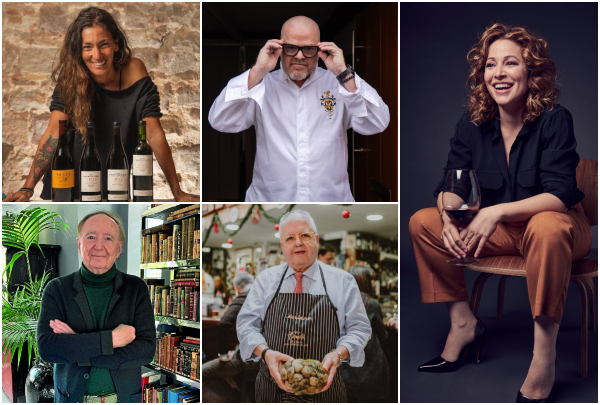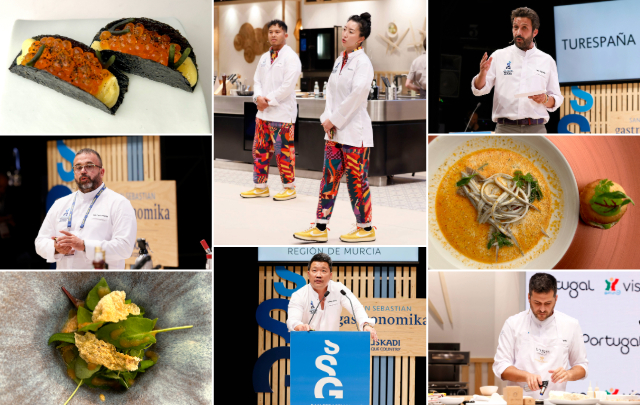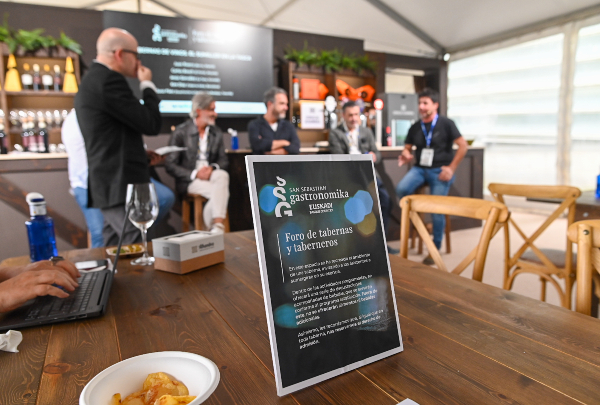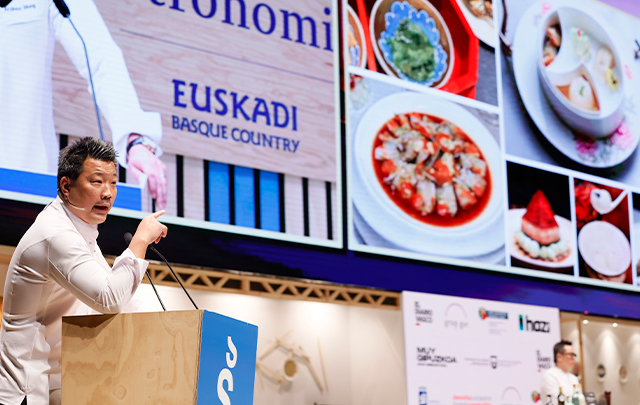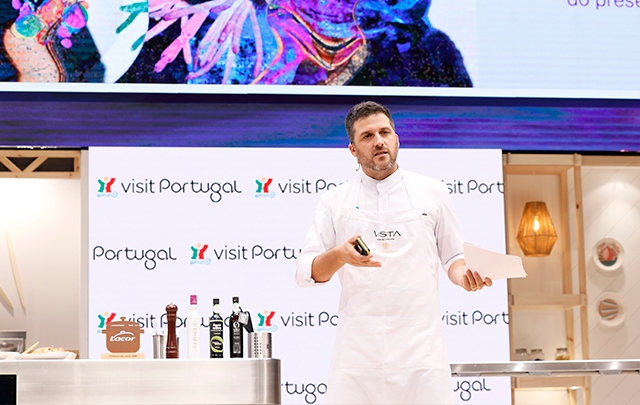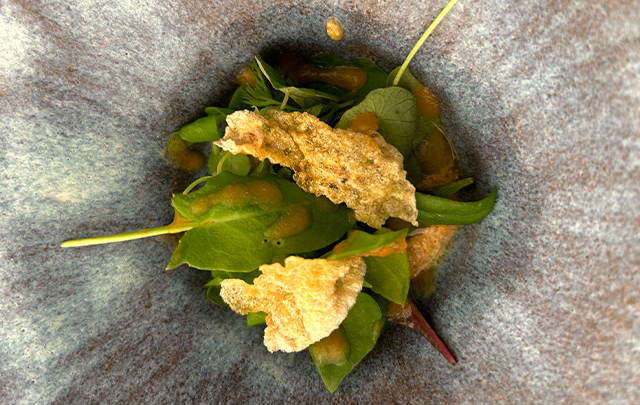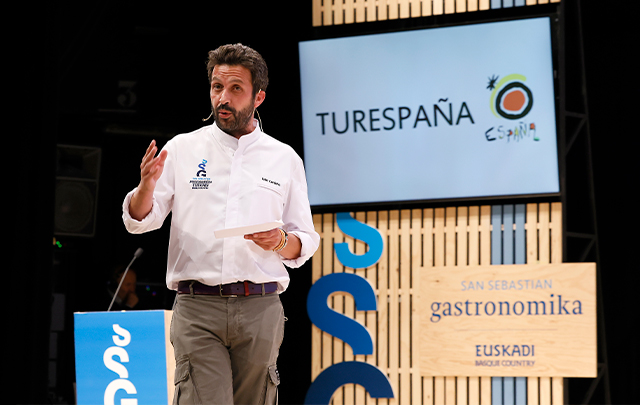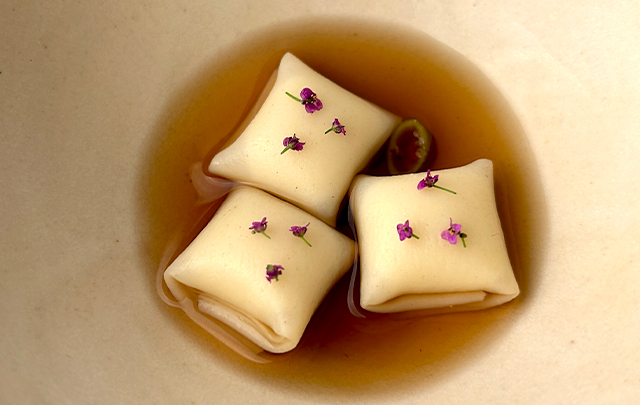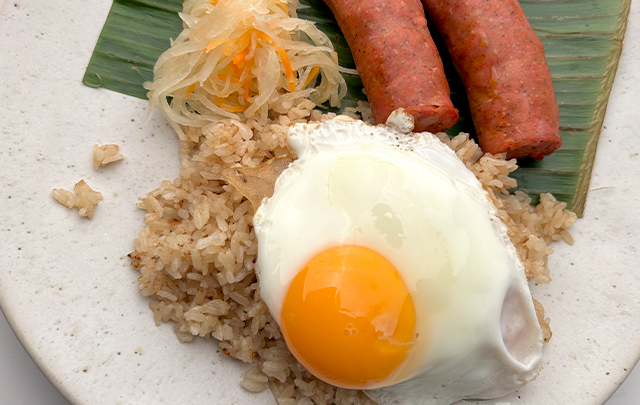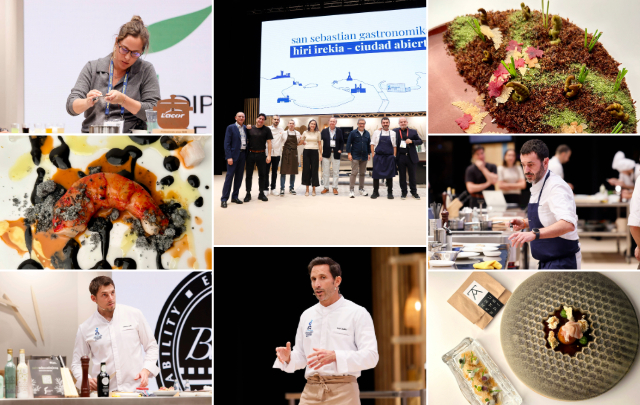News
Nature, a source of inspiration for the dish and the glass
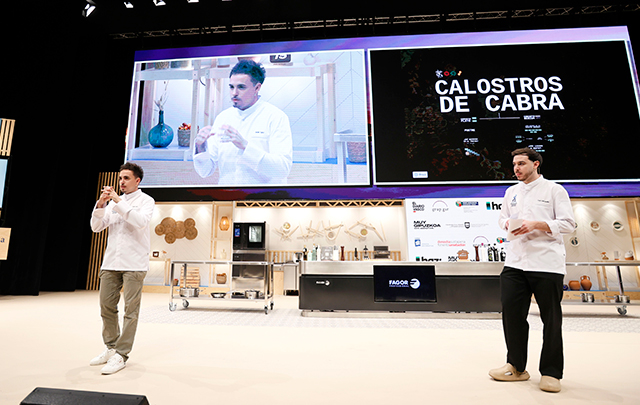
Chefs Javier Sanz and Juan Sahuquillo make their debut at Gastronomika to explain their creative process, which deconstructs each ingredient to take advantage of all its properties, liquid and solid.
Friends since childhood, they have known the kitchens of Mugaritz, Atrio, Casa Marcial or Andreu Genestra before returning to their hometown of Casas-Ibáñez, a town in Albacete, where they have also grown as professionals, first in the family restaurant and for the last three years at OBA-*, where they received their first Michelin star a year ago. "It's a dream for us to be on the stage of Gastronomika, where we have been coming for many years to learn from our colleagues," said Javier, admitting that "we are in the process of establishing our concept, which we believe is solid and long-term".
Sourcing from the environment, with a personal and reflective view of origin, is the philosophy they defend and with which they articulate their gastronomic discourse. "Separating a product to put it back together, following a map of the creative process of the dish, which is always based on three pillars: taste, texture and a common philosophy or coherence with the rest of the dishes", explains Juan. And the third is to ask what is the first thing a person eats, and what is the last thing before dying of a disease. They chose to show us the possibilities of colostrum and whey, both on the plate and in the glass, 'with the romantic touch that childhood memories bring us and this emotional association', they argued.
Marigold blossom and colostrum masate
And with goat's milk colostrum, they showed their map, starting with the solid dish, a beautiful marigold flower of colostrum whipped cream, with hazelnut praline, colostrum filling 'after pyrolysis and extraction of its own whey', raw almond and marigold. 'Nature is our inspiration and we also rely on aesthetics, using natural materials and reinterpreting its elements to reinforce our objective,' they explained.
At OBA- they are developing the attractive Natura project, a cellar of native and forgotten vegetables with more than 50 references, which they keep pickled, pickling or in brine to observe their evolution and find a way to use them in the menu. After separating an ingredient, we put it back together on the outside through pairing. We have 12 homemade glasses, more or less alcoholic, which account for 60% of sales of our pairings, so people seem to like them,' Javier assures. As for the colostrum in particular, the sommelier and the head of fermentation have been kept in check. 'Since we didn't want to get a PX or a Palo Cortado, we decided to make it ourselves, using culinary and oenological techniques; the result is a drink similar to the Colombian masato, which has been resting for a year and a half'.

